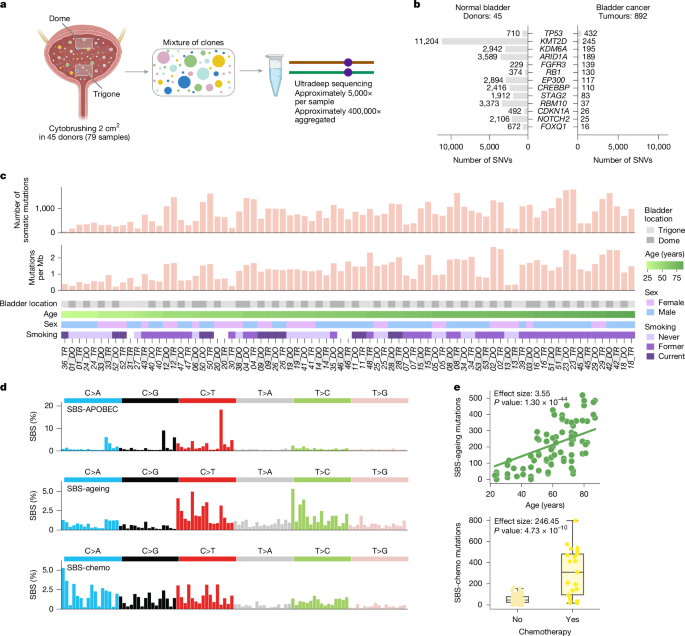Summary: Groundbreaking research has revealed that as men age, harmful genetic mutations in sperm not only accumulate but are also favored during sperm production, giving them a reproductive advantage. Using ultra-accurate DNA sequencing, scientists found that sperm from older men were significantly more likely to carry disease-causing mutations, including those linked to neurodevelopmental disorders and cancer.
This phenomenon, known as “selfish selection,” allows certain mutations to thrive within the testes, increasing risks to offspring over time. The findings offer crucial insights into how paternal age influences genetic inheritance and the mechanisms driving mutation spread across generations.
Key Facts:
- Age-Linked Mutation Rise: Harmful mutations increase from ~2% in younger men’s sperm to 3–5% in older men.
- Selfish Selection: Some mutations gain a biological advantage during sperm production, helping them spread.
- Genetic Health Implications: Many affected genes are tied to disorders in children and inherited cancer risks.
Source: Wellcome Sanger Institute
Harmful genetic changes in sperm become substantially more common as men age because some are actively favoured during sperm production, new research has revealed.
In a landmark study published today (8 October) in Nature, researchers from the Wellcome Sanger Institute, in collaboration with the TwinsUK study at King’s College London, have comprehensively mapped how harmful DNA changes in sperm cells can increase across the genome as men age.

The findings create new possibilities to explore how lifestyle and environmental factors might influence genetic risks passed on to future generations.
In renewing tissues, mutations – changes in DNA – can give cells a competitive advantage leading to ‘clones’ of cells that carry the same mutations. Groups of these clones then expand to outgrow other cells.
Unlike mutations in ordinary, or somatic cells, which make up connective tissue, bones and organs, mutations in sperm and egg cells are transmitted to the next generation of offspring.
However, until recently, it has been difficult to measure how strongly these mutations are favoured in sperm because DNA sequencing methods were not accurate enough.
In a new study, researchers used NanoSeq, an ultra-accurate DNA sequencing method to analyse sperm from 81 healthy men, aged between 24 and 75 years, with unprecedented precision.
The sperm samples were collected as part of the TwinsUK cohort, the UK’s largest adult twin registry, providing a unique opportunity to study genetic variation across a diverse and well-characterised population.
The results show that around 2 per cent of sperm from men in their early 30s carried disease-causing mutations, but this rises to 3–5 per cent of sperm from middle-aged (43 to 58 years) and older men (59 to 74 years).
Whilst men may be more likely to father children at a younger age, the researchers found that in those aged 70, 4.5 per cent of sperm carry disease-causing mutations. This clear age-related rise highlights how genetic risks for offspring increase as fathers get older.
This risk is driven not just by the steady build-up of random changes in DNA, but by a subtle form of natural selection acting on the sperm-producing cells in the testes, giving some mutations a competitive edge during sperm production.
The researchers identified 40 genes where certain changes in DNA are favoured during sperm production, including many linked to severe neurodevelopmental disorders in children and inherited cancer risk.
While 13 genes have already been associated with this process, the new findings show it is far more widespread than previously understood, affecting a broad range of genes important for cell growth and development.
Although the proportion of sperm carrying harmful mutations increases with age, not all of these changes lead to successful fertilisation or live births. Some may impair fertilisation, embryo development, or result in pregnancy loss.
Further research is needed to understand exactly how the growing burden of sperm mutations translates into health outcomes for children.
The researchers hope that uncovering how variations in DNA arise and are shaped by selection in sperm will help improve reproductive risk assessment and open new opportunities to study how environmental and lifestyle factors impact genetic risks in future generations.
In a complementary study, also published in Nature today, scientists from Harvard Medical School and the Sanger Institute investigated the same phenomenon from a different angle by looking at mutations already passed on to children, rather than those measured directly in sperm.
By analysing DNA from over 54,000 parent–child trios and 800,000 healthy individuals, the team identified more than 30 genes where mutations give sperm cells a competitive edge, again including many linked to rare developmental disorders and cancer, and many overlapping the set of genes observed directly in sperm.
The study found that these mutations can increase sperm mutation rates roughly 500-fold which helps explain why some rare genetic disorders appear when parents do not carry the mutations in their own DNA.
Interestingly, the study notes that as these mutations are common in the sperm, it may look like some genes cause false-positive disease association due to the elevated mutation rate rather than a true disease link.
The work highlights how natural selection within sperm can be directly observed in the DNA of children, influencing their chances of inheriting certain genetic disorders.
Dr Matthew Neville, first author from the Wellcome Sanger Institute, said: “We expected to find some evidence of selection shaping mutations in sperm. What surprised us was just how much it drives up the number of sperm carrying mutations linked to serious diseases.”
Professor Matt Hurles, Director of the Wellcome Sanger Institute and co-author, said: “Our findings reveal a hidden genetic risk that increases with paternal age. Some changes in DNA not only survive but thrive within the testes, meaning that fathers who conceive later in life may unknowingly have a higher risk of passing on a harmful mutation to their children.”
Professor Kerrin Small, co-author and Scientific Director of the TwinsUK study at King’s College London, said: “We are incredibly grateful to the twins who took part in this study. By working with the TwinsUK cohort, we could include valuable longitudinal samples linked to rich health and genetic information, allowing us to explore how mutations accumulate and evolve with age in healthy individuals.
“This collaboration highlights the power of large, population-based cohorts for advancing our understanding of human development and inheritance.”
Dr Raheleh Rahbari, senior author and Group Leader at the Wellcome Sanger Institute, said: “There’s a common assumption that because the germline has a low mutation rate, it is well protected. But in reality, the male germline is a dynamic environment where natural selection can favour harmful mutations, sometimes with consequences for the next generation.”
Funding:
This research is part-funded by Wellcome. A full list of funders can be found in the acknowledgements in the publication.
Key Questions Answered:
A: Over time, DNA mutations build up and some gain a competitive advantage in sperm-producing cells, allowing them to multiply more efficiently.
A: Many are associated with neurodevelopmental disorders, such as autism spectrum conditions, and some inherited cancers.
A: Researchers believe so and aim to explore how environmental and lifestyle factors may shape genetic risks passed to future generations.
About this genetics and neurodevelopment research news
Author: Susannah Young
Source: Wellcome Sanger Institute
Contact: Susannah Young – Wellcome Sanger Institute
Image: The image is credited to Neuroscience News
Original Research: Open access.
“Sperm sequencing reveals extensive positive selection in the male germline” by Matthew Neville et al. Nature
Abstract
Sperm sequencing reveals extensive positive selection in the male germline
Mutations that occur in the cell lineages of sperm or eggs can be transmitted to offspring. In humans, positive selection of driver mutations during spermatogenesis can increase the birth prevalence of certain developmental disorders.
Until recently, characterizing the extent of this selection in sperm has been limited by the error rates of sequencing technologies. Here we used the duplex sequencing method NanoSeq to sequence 81 bulk sperm samples from individuals aged 24–75 years.
Our findings revealed a linear accumulation of 1.67 (95% confidence interval of 1.41–1.92) mutations per year per haploid genome driven by two mutational signatures associated with human ageing. Deep targeted and exome NanoSeq of sperm samples identified more than 35,000 germline coding mutations.
We detected 40 genes (31 newly identified) under significant positive selection in the male germline that have activating or loss-of-function mechanisms and are involved in diverse cellular pathways.
Most of the positively selected genes are associated with developmental or cancer predisposition disorders in children, whereas four of the genes exhibited increased frequencies of protein-truncating variants in healthy populations.
We show that positive selection during spermatogenesis drives a 2–3-fold increased risk of known disease-causing mutations, which results in 3–5% of sperm from middle-aged to older individuals with a pathogenic mutation across the exome.
These findings shed light on germline selection dynamics and highlight a broader increased disease risk for children born to fathers of advanced age than previously appreciated.
Source link


